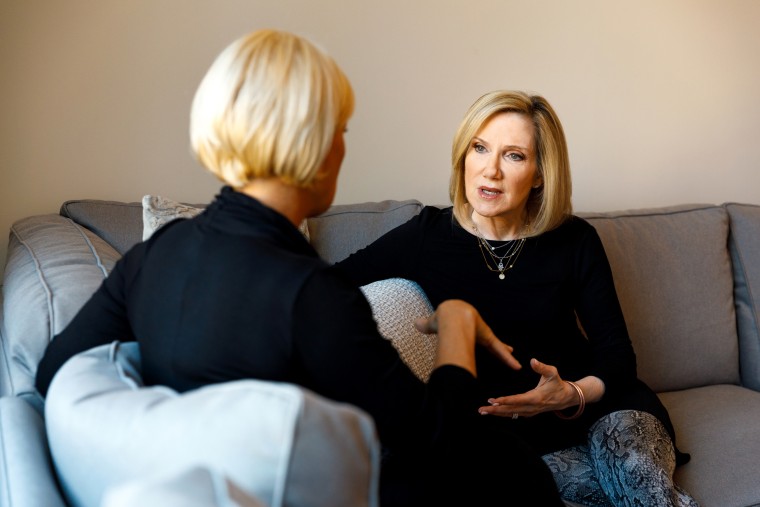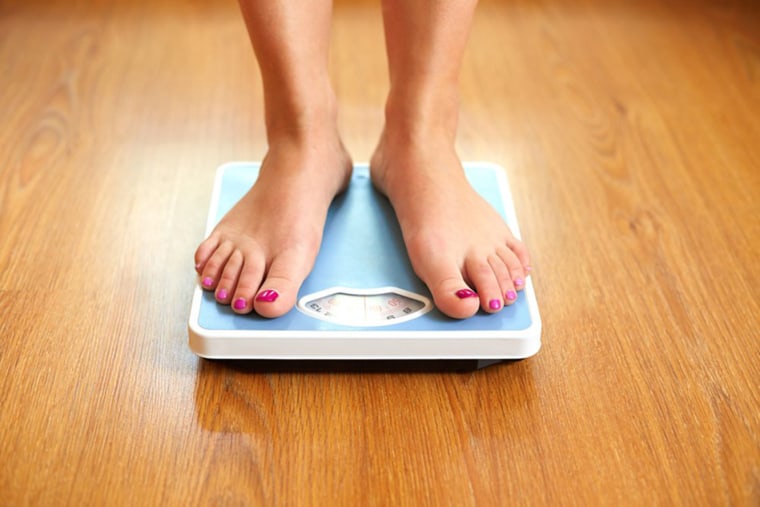I’ve spent my whole career in the health and wellness world—as a clinician, scientist, and media resource. And while much of my work is dedicated to others’ weight management, it’s been a personal struggle for me. Not that long ago, I made the decision to ditch my weekly weigh ins. And I’m never going back.
Like many women, I had a love-hate relationship with the scale. My usual routine was to weigh myself once a week, on Fridays mornings at 7 a.m., right before my morning shower. If the number of the scale was “good,” I’d be in a great mood all day. I felt validated. If the number was not what I expected, it was on my mind through much of the day and would impact my daily eating and exercise decisions. It was an emotional rollercoaster.
I remember once trying to lose 10 pounds, and I’d spend the day thinking about my calories, what to eat, what to skip, and how to barter for my exercise calories. Now those are all good ways to support healthy living—but when focused exclusively to achieve a number on the scale, they take on greater urgency. It created stress and pressure—not a mindset for change or better health.
The scale is like a frenemy—fraught with negatives with almost no positives. Our weight can fluctuate for so many reasons on a day to day and weekly basis--including intake of high-sodium foods, menstrual hormone changes, exercise, alcohol and more. But we don’t often see it that way.
I finally decided to put away the scale about 10 years ago, in 2012 when I realized that it was no longer a health plus but a persistent source of stress rather than a tool for mindful living. I realized there were other productive ways to “size myself up.” And out of sight, out of mind worked for me. I put my scale in a closet—it’s not even in my bathroom!
Now, I no longer weigh myself regularly, only a few times a year. And I’m happier (and healthier) as a result.
Instead, I’ve have set a target weight range (not one number). If I’m within a 5 pound range, then I know I’m being consistent. If not, and it’s creeping up, I tweak my eating and activity routine to monitor my behaviors more closely. I have the confidence to know I can succeed in getting back into my “comfort range”.
I’ve always started off any weight management talk with my patients with a simple phrase: “Stop worrying about your weight.” This simple phrase allows people to take the pressure off an arbitrary number, and really think about what mattered for their health – for example avoiding chronic illnesses like diabetes or high blood pressure, or running around with their kids, or being able to be more physically active with their partners. That’s what motivates people to take action, not a number.

Our obsession with the scale has been around for a long time. It all began with the term “body mass index” (BMI), which was invented in the 1830s by a Belgian mathematician, linking weight and height. But it wasn’t until the 1970s that it was associated with excess weight and adopted by the National Institutes of Health to define obesity in the United States. This was all done in good faith, with an effort to “medicalize” obesity—meaning a way to “measure” obesity, like blood pressure. With that number in hand, calculations could be made to predict a person’s risk for chronic diseases like diabetes and heart disease.
This estimate sounded like a good start—until the data started driving the range of “healthy” in the wrong direction. As originally defined, a BMI of 27 was “healthy,” but the new guidelines in 1998 recommended lowering this number to 25, based on mathematical predictors of health risk. So, overnight, millions of Americans went from being a healthy weight to being overweight. That, to me, was already a sign that this measure had some serious flaws.
And while this approach remains valid for general population studies, it’s not much help to the individual—including you and me—looking for personal guidance.
While science has contributed a reasonable start as to what weight is “best” to reduce disease risk, it’s time to adjust that concept around an individual’s ability to sustain better health through individual achievement, and not an elusive number of the scale (which is often a spirit deflator).
Now that I’ve ditched the daily weigh ins, I’m focused on other practical and impactful measurements. Here are a few of my favorites:
1.Keep a belt handy to make sure the notch remains the same
2. Be able to easily zip up jeans or pants.
3. Monitor your ability for physical activity (housework to yoga) without increasing effort
4. Participate in each of the three pillars of exercise: cardio, strength, flexibility
5.Get a good night’s sleep
6.Track your food intake and daily activity to see where you can make some tweaks.
7.Get yearly blood work and a physical from your primary care doctor—and discuss the results
8. Eat at least five servings of fruits and vegetables daily
Lastly, remember to do some realistic goal setting, and take a look at your overall health. If you’re feeling happy and active—and your laboratory results are in a healthy range, then you’re at the right weight for you. When your goal is good health and not a number on the scale, you’re setting yourself up for success.
Madelyn Fernstrom, Ph.D. is an NBC News and TODAY health contributor. Follow her on Twitter @drfernstrom.
